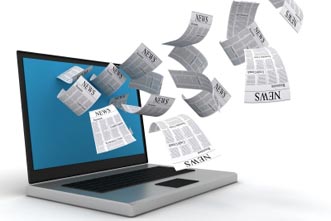Can I be candid with you? I don’t read every email I receive. I’m not even talking about forwards of cute stories that get massed emailed…I almost never read those…I’m talking about informational emails. The emails that have information in them I probably need…I don’t often absorb all of it.
I know. That sounds awful. Hopefully, someone in the comments will let me off the hook of seeming cruel or weird and admit they are the same way. But, here’s the fact. I’m not detail oriented. At all. If you send me a “book email”…one that appears exceptionally long and full of details…you often lose me before I really get started. (Again, just being honest.)
But, I know it’s probably vital information. You wouldn’t send it to me unless you wanted me to read it…right?
So, what can we do about it? I could tell you I’ll change…I’ll bite the bullet and read your longer than necessary email (see, I’m trying to be lighthearted about this subject…so you can laugh now), but the truth is…I probably won’t. History proves otherwise. Show me more than a few paragraphs and I’m probably out of here.
Let me give you a few suggestions. I’ve given these to staff members who write really long…packed with detail…emails. Some have taken my advice and learned that it actually increased their communication results. People seemed to more closely read their emails. They actually appeared to know more of the details the person emailing was trying to communicate. And, isn’t that the goal?
With that in mind, here are 5 suggestions for better emails:
Personalize the email – Mass emails get read less by me. If I see there are many people on the list of recipients, I figure I’m not that necessary as a reader. Someone else will respond. (I know…to some that seems arrogant of me…but at least I’m truthful. And, I suspect I’m not alone.) An email written just to me is far more likely to grab my attention. Thankfully there are programs now that do a mail merge type function for you.
Make the main point early – What is the point of the email? What do you want to communicate if I get nothing else. Say that immediately. If it’s multiple pieces of information, say that up front too. It might be helpful to bold or underline the main ideas, (but don’t use weird colors or oversized font.) Highlight the most pertinent facts you want to convey, dates or locations, especially if the email is very long. Here’s the bottom line, if you don’t capture my attention soon in a longer email, I’m probably less likely to absorb the key points you want to make sure I get. I realize that’s my fault, not yours, but if you want the information absorbed…you’d want to know your audience, right? And again, I suspect I’m not alone. If you write long emails, I suspect you are losing more readers than you think.
Use bullet points for main ideas – People can often read lists easier than paragraphs when dissecting detailed information. The points you want to make will seem more streamlined and easier to follow if you number them or bullet point them in some way. (I hear frequently that people like how I do that with blog posts like this one. Some wired like me may only read the points in bold. I already know that. If that’s you, you’re not reading this right now…are you?)
Consider an opening summary – On especially longer emails, or emails with lots of details, consider opening with the main highlights for quick and busy readers, listing only the points you’ll expand upon later. They can scan down if they want or need more details, but this way your main ideas get attention and hopefully you capture the reader’s interest enough so they read what you have to say before they disappear.
Proofread – Before hitting the send button, read over it as if you were reading it aloud for the first time. Does it sound like you? Is it complete in thought? Are there obvious grammatical or spelling errors? Are there any lines or words you could cut and the point still be made? (If so, cut them.) You’ll lose some readers if it is not a tightly written email.
That’s it. There might be more I could add, but this post is getting kind of long. And, I’ve already lost some of you.












